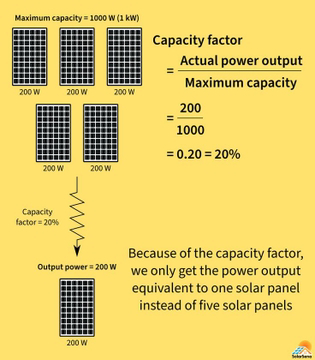1. Total Load Calculation:
- The total load is calculated as 400 watts, with 30% extra or safety factor, which requires an inverter in the range of 800-1000 watts.
2. Battery Capacity:
- Based on the 400-watt system, the battery capacity required is 300 Amp-hours (AH) at 12 volts with 9 hours of backup time.
3. Home Load Current:
- The home load current is calculated as 33 Amps, based on the power (400 watts) and voltage (12 volts).
4. Solar Plate Current:
- The solar plate current is calculated as 66 Amps, which is the sum of the battery charging current (30 Amps) and the home load current (33 Amps).
5. Solar Plate Power:
- The solar plate power is calculated as 792 watts, based on the voltage (12 volts) and current (66 Amps).
6. Solar Plate Quantity:
- The available solar plate sizes range from 150 watts to 330 watts, and the calculation suggests that 5 solar plates are needed for this 400-watt system.
7. Solar Plate Wattage:
- The single solar plate wattage is 180 watts, and the total solar plate wattage for the 5 plates is 792 watts.
This information provides a comprehensive overview of the key calculations and considerations for a 400-watt solar system installation, including the required inverter size, battery capacity, load calculations, and solar plate specifications.















